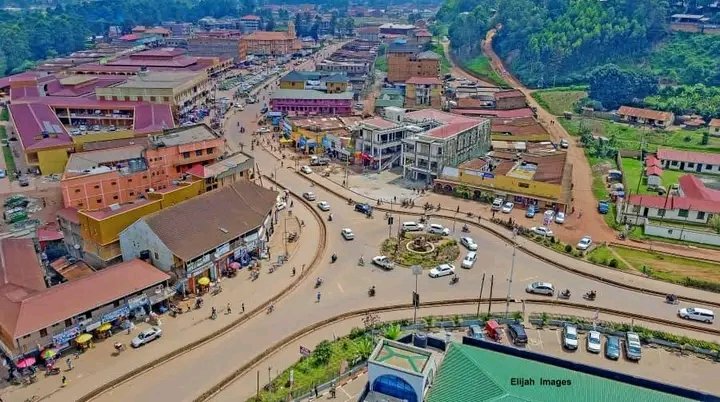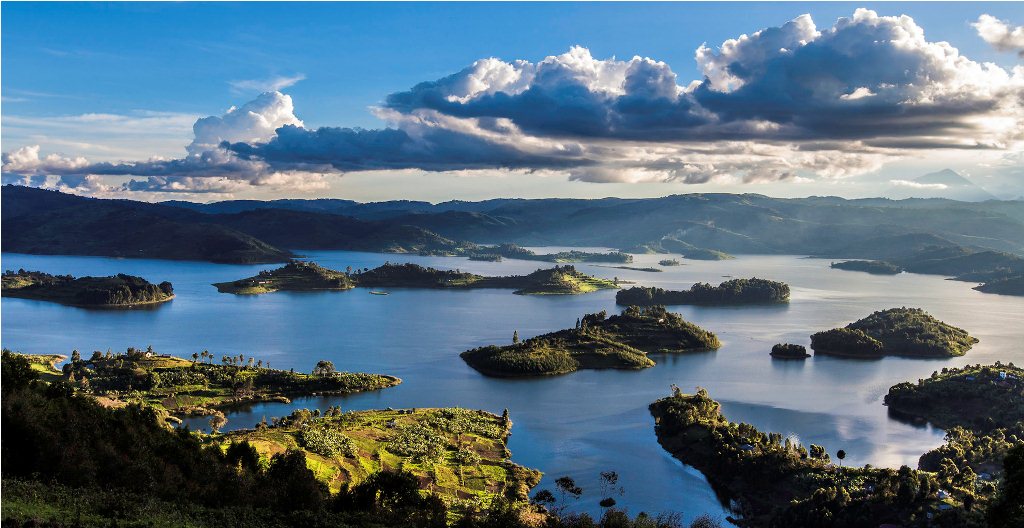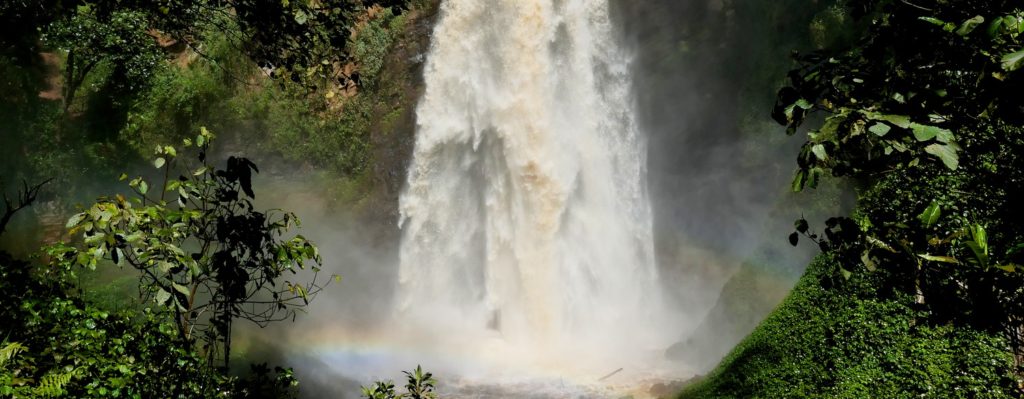Kabale Town
Introducing Kabale town, a hidden gem in the Kigezi sub-region in southwest Uganda, a nation endowed with natural beauty. The town lies close to the Republic of Rwanda’s Katuna border, bordering the districts of Ntungamo, Rukiga, Kisoro, and Rukungiri. This lively town boasts a breathtaking scenery, terraced hills, pleasant weather, and an exciting nightlife.
The town center is spread across roughly 1,827 square kilometers and is home to a diverse range of spectacular flora and animals, as well as hospitable residents. This region has been dubbed the “Switzerland of Africa” because to its undulating hills, steep valleys rising to a height of 1,200 meters, and abundant vegetation.

Kabale Town is roughly 410 miles southwest of Kampala, Uganda’s oldest city, and roughly 143 km from Mbarara, the main city in the country’s western area. Traveling from Kampala to Masaka and Mbarara on the road takes about nine to eleven hours, but the route offers breathtaking views of the equator and undulating hills.
Kigezi district was renamed Kabale district in 1980. The first Catholic missionary, Yowana Kitagana, established a mission site in the region in 1911. The first protectorate mission built the first church in 1912. The word Kabale, which means “small stone” in the native Rukiga dialect, was used to inspire the name.
This lively town welcomes tourists from all over the world, whether they are there for business, adventure, or leisure. This town and the surrounding area provide a plethora of additional sights and activities. While visiting some of the monuments, such Kabale University—a government-owned university with some of the top academic facilities, science, and technology—consider taking a stroll or taking a ride around the town. You should also check out the Kabale golf course.
Activities and attractions in the district of Kabale.
Visit Kabale district for a variety of exciting activities, excitement, and adventure whether you’re on your honeymoon, weekend getaway, end-of-year celebration, summer vacation, or winter vacation.
Bunyonyi Lake
Lake Bunyonyi is located in Kabale District in southwest Uganda, close to the Rwandan border. One of Uganda’s most popular tourist destinations is Lake Bunyonyi, one of Africa’s most naturally stunning lakes. Travelers, newlyweds, and Ugandans looking to escape the bustle of the city and take advantage of the refreshing climate and picturesque islands are drawn to the lake. The lake is a wonderful location for relaxation and meditation, and it provides breathtaking views in all directions. The Lake is a body of water that was formed hundreds of thousands of years ago when a volcanic eruption filled a valley.

Lake Bunyonyi in Kabale Town
The lake and its islands are home to an incredible variety of bird species, hence the name Bunyonyi, which translates to “a place with little bird.” It’s among Africa’s deepest lakes. The region around Lake Bunyonyi experiences year-round cool weather and enough rain to sustain the verdant hills that encircle the lake. After exploring Uganda’s magnificent national parks, such as Bwindi and Queen Elizabeth, this area is ideal for unwinding.
Nine islands make up Lake Bunyonyi, including the notorious Punishment Island (Akampene), Bushara, Njuyeera, and Bwama. Any girl who became pregnant before being married was hauled away by the Bakiga in the region and left to perish from starvation or drowning on Akampene Island (girls were not taught how to swim). At those time, getting pregnant was considered a sin since no one would pay a female who had become pregnant before marriage. To make it clear to the others that becoming pregnant before marriage was improper, the girl was abandoned to perish on the island. The man who had gotten the girl pregnant would face no consequences. For fear of being abandoned to perish, the girl was unable to identify the guy who had impregnated her. Some of the girls were saved by their impoverished bachelors who couldn’t afford the marriage price, or by the men who had gotten them pregnant. Following its prohibition by the British colonial authority, this antiquated practice was discontinued by the late 1940s. A small number of the people who were saved and made it through the ordeal are still alive today.
Bwama Island conceals a sordid background as well. Bwama Island was deserted when English missionary Leopard Sharp arrived in Uganda in 1921. By constructing homes and medical facilities, he transformed the island into a center for the treatment of leprosy sufferers. Sharp and his family resided on Njuyeera Island, which is close by. As a leprosy colony, Bwama Island attracted a large number of patients who had been shunned by their community. On the other hand, Bushara Island has had a simpler history, despite the fact that the residents cleared the region of its original, lovely trees to make place for crops. The Lake Bunyonyi Development Company manages a number of tourism-related operations on the island and has assisted in the planting of a sizable eucalyptus grove. The company transformed the island into a fantastic vacation spot by constructing lodging facilities.
Keeping track of economic activity, it appears that everything starts and ends at Bufuka Village’s main trading hub. Subsistence farming and fishing are the main sources of income in the Lake. Because deep waters prevent big species like tilapia and Nile perch from thriving, large-scale fishing has been restricted. For reproduction, these species require shallow waters. The most prosperous species are the mudfish and crayfish, which were imported from the US. With little success, numerous attempts have been undertaken to import the other principal species from the colonial era onward. A chemical mixture brought on by flooding once killed eighty percent of the introduced species.
Waterfalls in Kisiizi.
Kisiizi Waterfalls is a historic location that offers unparalleled views and a place to unwind. It is situated at the Kyabamba River in the settlement of Kisiizi amid the Kigezi highlands. The community there is inhabited by the Bakiga people.

Trekking encounters with golden monkeys and gorillas.
In Uganda and the Kabale district, this is a popular safari activity. Located at the base of the massive Virunga mountain range, gorillas can be found in the Bwindi Impenetrable and Mgahinga Gorilla National Parks. The two parks are open to visitors from June to September and from December to March, while they are open year-round. The closest areas for gorilla trekking when visiting Kabale Town are Ruhija and Nyakagezi.
The cultural journey of the Batwa pygmies
Step foot in the Batwa village and engage with some of the world’s shortest people, whose identity is rooted in wandering and assembling in one of Africa’s oldest and most varied misty tropical forests.
Facilities for Housing the Batwa People in Kabale Town.
There’s no need to get lost in Kabale town because there are plenty of affordable, midrange, and luxury hotels, inns, and safari lodges to choose from. Paradise Eco-Hub, Crater Bay Cottages, Ultimate Adventure Park Bunyonyi, Jowillis Hotel, Bunyonyi Eco-resort, Bunyonyi Safaris Resort, Birdnest Resort, and Arcadia Cottages are a few of the noteworthy ones.



